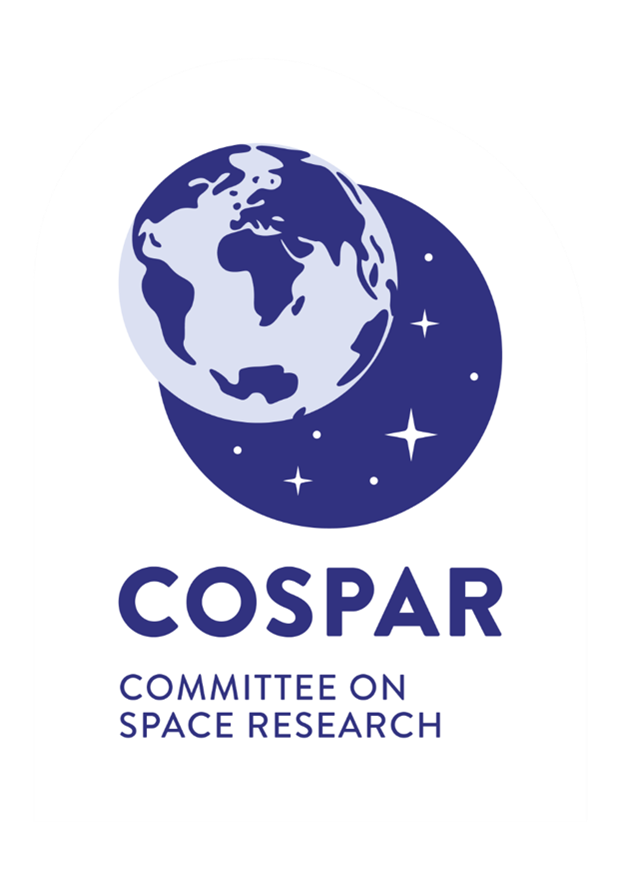In the late 1970s, NASA’s Voyager mission provided the first tantalising clues that Europa, one of Jupiter’s moons, might have an ocean beneath its thick icy shell. Since then, missions such as NASA’s Galileo and Cassini-Huygens spacecraft have provided evidence of sub-surface oceans on other moons of Jupiter and Saturn, such as Ganymede, Callisto, Titan and Enceladus.
With the identification of water comes the possibility of life, and much effort has been put into understanding whether these subsurface environments could be habitable. Excitingly, several missions are planned to visit these bodies in the coming years: Europa Clipper, to explore Europa in more detail from orbit; JUICE (JUpiter ICy Moons Explorer), to study the icy moons Ganymede, Europa and Callisto; and Dragonfly, focusing on the surface of Saturn’s moon Titan.
 Plumes of gas and water ice emitted from Enceladus' south pole show water must be present beneath the ice shell.A black and white photograph of Enceladus’ south pole. The moon is in the foreground with black space behind. The moon’s surface is mostly in shadow but is lit from the left-hand side to reveal the arc of the moon’s horizon. Bright white points of light are emitted from the surface, which diffuse into space.
Plumes of gas and water ice emitted from Enceladus' south pole show water must be present beneath the ice shell.A black and white photograph of Enceladus’ south pole. The moon is in the foreground with black space behind. The moon’s surface is mostly in shadow but is lit from the left-hand side to reveal the arc of the moon’s horizon. Bright white points of light are emitted from the surface, which diffuse into space.
Pristine icy worlds
These missions present exciting opportunities to learn more about these bodies, their potential habitability, role in pre-biotic chemistry and physical and chemical conditions that result in the presence of water and energy that might support life. If life was found there it might even indicate a second genesis of life in addition to life on Earth. However, there is only so much that a single space mission can accomplish, especially since Europa Clipper and JUICE are orbiters. So, it is likely that these moons will be targets for other missions in the future. It is therefore critical to ensure these moons remain unspoilt and pristine to not jeopardise future investigations. More importantly, if these moons were to harbour life, it is imperative that we do not interfere or disrupt their habitat in any way.
This is achieved through Planetary Protection, the practice of protecting Solar System bodies from contamination by Earth life and protecting Earth from possible life forms that may be returned from other Solar System bodies.
Even orbiting spacecraft must adhere to a set of requirements that minimise the amount of biological material (bioburden) carried by a spacecraft that might contaminate an extraterrestrial environment.
Keeping icy worlds clean
The Policy on Planetary Protection (see below) outlines the requirements of each mission, which depend on the target body for the mission, the type of mission (a flyby, orbiter, lander or sample return), and its scientific objectives. This results in a categorisation from I to V, where Category I missions have the lowest contamination risk. Icy worlds are included in all categories except Category I, which is assigned to missions to bodies that have no perceived relevance to chemical evolution or the origin of life studies.

The Policy on Planetary Protection was written by the Committee on Space Research (COSPAR)’s Planetary Protection Panel. Although not legally binding, it sits within the legal framework of Article IX of the Outer Space Treaty (United Nations, 1967).
Image description: The Committee on Space Research (COSPAR) logo.
One of the underlying concepts is that of the ‘period of biological exploration’, which for icy worlds is 1000 years, and that the probability that a robotic mission will operate, and therefore potentially contaminate an icy world in that period is less than 1 x 10-4. This is calculated by considering how much biological material (bioburden) the spacecraft carries, whether microorganisms can survive the journey, and the likelihood of the spacecraft landing on the body’s surface. The calculation also considers the time it might take for any stowaway microbes to be transported to the underlying ocean and survive and thrive there.
These considerations are needed whether the mission is an orbiter or lander because of the risk of any spacecraft crashing into the surface, deliberate or otherwise. An example of this in practice is NASA’s Cassini mission.
Cassini’s sacrifice
 The icy surface of Titan as photographed by the Huygens mission in 2004.An orange-hued photograph of the surface of Titan showing rounded boulders of ice.Cassini delivered the Huygens probe to the
surface of Titan in 2004. However, it was launched seven years
earlier in 1997. At that time, it was considered highly unlikely that life
could survive in the extreme cold of Titan’s surface and the risk of
contamination of the moon was low. For
this reason, it was classified as Category II (interesting for origin of life
but low risk of contamination). However, by the time Cassini reached the end of
its mission, much more was known about the potential for water on nearby moons,
such as Enceladus. With the mission initially destined to be adrift in the
Saturnian system once operations had ended, the possibility of it crashing into
an astrobiologically important body was therefore high. To avoid this, while
Cassini was still operating, it was programmed for a controlled descent into
Jupiter’s atmosphere where it was destroyed, losing contact with Earth in 2017
and avoiding a collision and contamination event elsewhere.
The icy surface of Titan as photographed by the Huygens mission in 2004.An orange-hued photograph of the surface of Titan showing rounded boulders of ice.Cassini delivered the Huygens probe to the
surface of Titan in 2004. However, it was launched seven years
earlier in 1997. At that time, it was considered highly unlikely that life
could survive in the extreme cold of Titan’s surface and the risk of
contamination of the moon was low. For
this reason, it was classified as Category II (interesting for origin of life
but low risk of contamination). However, by the time Cassini reached the end of
its mission, much more was known about the potential for water on nearby moons,
such as Enceladus. With the mission initially destined to be adrift in the
Saturnian system once operations had ended, the possibility of it crashing into
an astrobiologically important body was therefore high. To avoid this, while
Cassini was still operating, it was programmed for a controlled descent into
Jupiter’s atmosphere where it was destroyed, losing contact with Earth in 2017
and avoiding a collision and contamination event elsewhere.
The future for icy world Planetary Protection
As our knowledge of the environments of icy worlds grows, and as we come to understand more about life on Earth, it’s likely that the Planetary Protection requirements will also evolve. These might include the use of more sophisticated cleanroom technologies and approaches, or even require a change to the conditions considered as the limits for life.
Since Cassini analysed the gas and ice in Enceladus’ plumes during a series of passes through them, suggestions for future sample return missions have also been made. Any such plans would attract the most stringent Planetary Protection requirements (Category V), both to minimise contamination to the moon and to the Earth’s biosphere on return. However, it is important that this is balanced against our need to explore and investigate. Critically, though, the only way that data from samples of these worlds can be considered reliable, particularly in relation to the search for life, is by applying robust Planetary Protection requirements.
 This article is part of the Astrobiology Collection on OpenLearn. This collection of free articles, interactives, videos and courses provides insights into research that investigates the possibilities of life beyond the Earth and the ethical and governance implications of this.
This article is part of the Astrobiology Collection on OpenLearn. This collection of free articles, interactives, videos and courses provides insights into research that investigates the possibilities of life beyond the Earth and the ethical and governance implications of this.




Rate and Review
Rate this article
Review this article
Log into OpenLearn to leave reviews and join in the conversation.
Article reviews